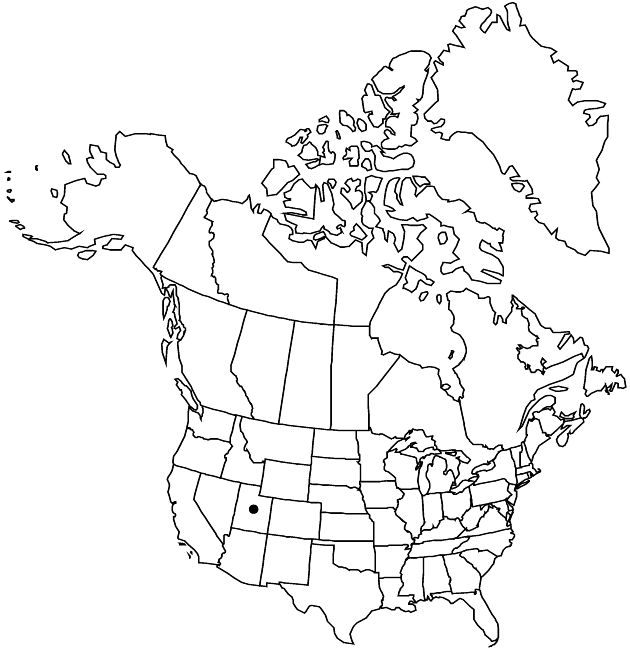Herrickia wasatchensis
Sida 21: 897. 2004.
Perennials, 20–60 cm, colonial and cespitose, short-stipitate-glandular; rhizomes woody, elongate and creeping, or short, erect, branched. Stems 1–4+, erect, sometimes branched proximally, straight glabrescent to thinly scabridulous proximally, stipitate-glandular distally, densely so in arrays. Leaves cauline, proximal smaller and withering by flowering, yellowish green, paler abaxially, firm; sessile; blades lanceolate (sometimes widely) or lanceolate-oblong to oblong or oblanceolate, 20–110 × 6–30 mm, bases ± clasping, rounded, main veins ± marked, margins entire, slightly indurate, sparsely to densely scabridulous, apices acute to obtuse, mucronate, faces glabrous; distal (arrays) lanceolate, 8–60 × 2–13 mm. Heads 2–20+ in ± open, corymbiform arrays with ascending branches. Peduncles densely stipitate-glandular; bracts 0–2, sometimes directly subtending heads, foliaceous or ± grading into phyllaries (bases scarious), margins glandular-ciliate, faces densely stipitate-glandular. Involucres campanulate, 8.5–11 mm. Phyllaries (27–31) in 3–4 series, keeled or rounded, ± spatulate to oblong-obovate or oblong (outer) to lanceolate or linear-lanceolate (inner), unequal, foliaceous (outermost) to membranous, green zones in distal 1/2–6/7 (outer) to ca. 1/10 or reduced to midnerve tips (inner), margins not (outer) or narrowly scarious, hyaline, sometimes purplish distally (inner), erose, glandular-ciliate, apices reflexed to squarrose, acute to acuminate, sometimes apiculate (innermost), abaxial faces ± stipitate-glandular (more densely so on green parts), adaxial stipitate-glandular (on green parts). Ray-florets 13–21; laminae white (to pink), 15–28 × 1.6–2.5 mm. Disc-florets 26–43; corollas yellow turning reddish purple, barely or not ampliate, 6.7–10.1 mm, tubes (2.2–3.6 mm) shorter than funnelform throats (3.8–5.4 mm), lobes erect to slightly spreading, lanceolate, 0.8–1.1 mm. Cypselae tan to brown or reddish-brown, fusiform, ± compressed, 3.5–5.5 mm, ribs 9–10 (stramineous to tan), ± strigillose; pappi of (ca. 60) yellowish bristles 6.5–9.5 mm. 2n = 18.
Phenology: Flowering summer–early fall.
Habitat: Open, rocky slopes from foothills to mid elevations in mountains, pinyon-juniper, aspen, limber pine and spruce-fir communities
Elevation: 1800–3050 m
Discussion
Herrickia wasatchensis is known only from the Wasatch Mountains, where it is considered vulnerable.
Selected References
None.
Lower Taxa
"[" is not declared as a valid unit of measurement for this property."]" is not declared as a valid unit of measurement for this property.
